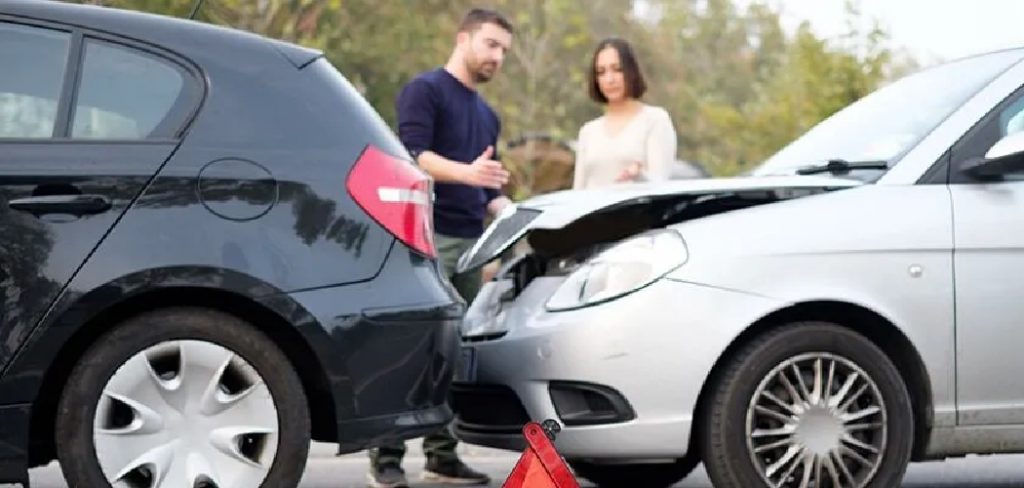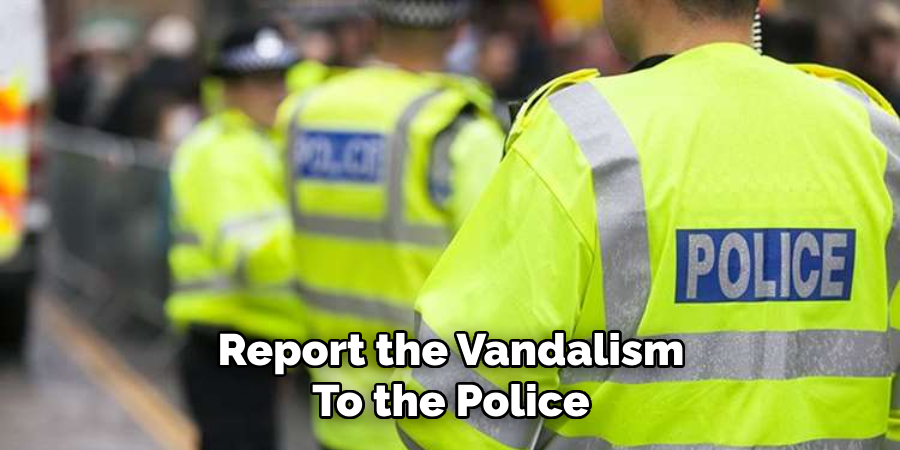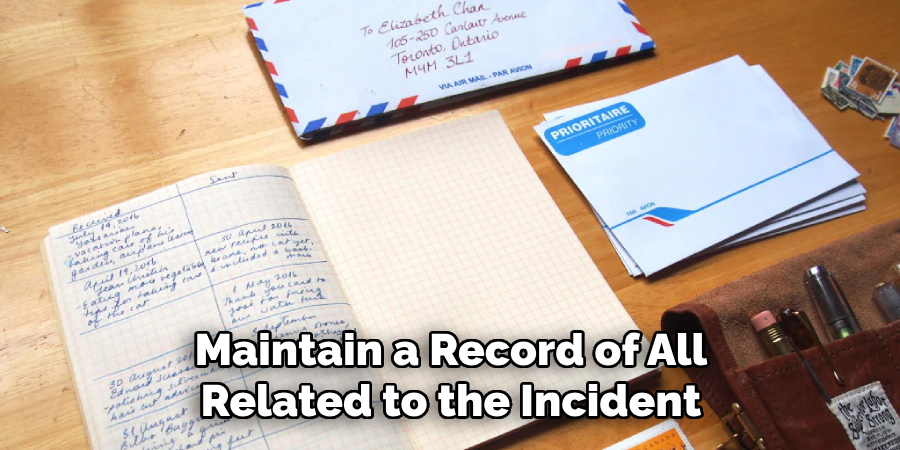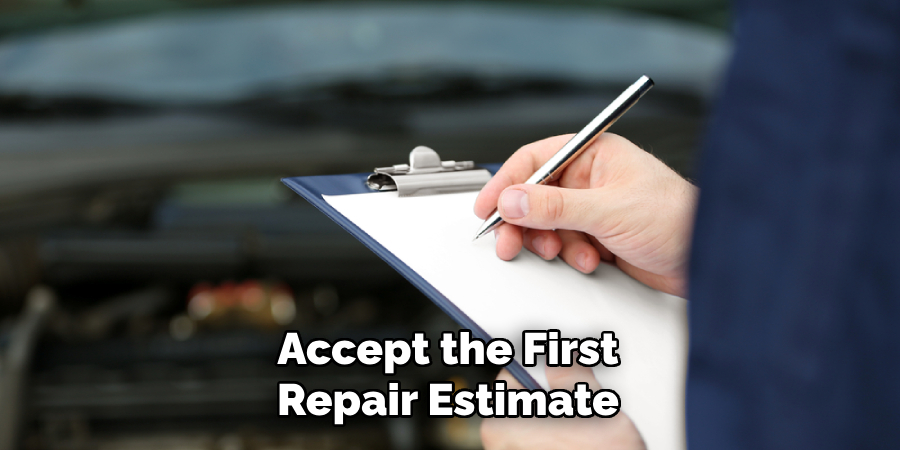Are you worried that someone may have vandalized your car? This can be a stressful and frustrating experience, but there are steps you can take to prove the vandalism and potentially receive compensation for damages.

How to prove someone vandalized your car can be a challenging and stressful experience. Whether it’s a scratched paint job, broken windows, or other damages, the key to successfully holding the responsible party accountable lies in gathering concrete evidence and taking appropriate legal steps.
This guide will provide you with essential strategies and tips for documenting the damage, collecting necessary evidence, and navigating the legal process. It will ensure that justice is served and that you are adequately compensated for the harm done to your vehicle.
What Will You Need?
Before you start documenting the damages and collecting evidence, there are a few things that you will need to have on hand. These items will help you build a strong case and increase your chances of receiving proper compensation for the vandalism.
- Registration and Insurance Information: Keep your car registration and insurance information handy as it can serve as proof of ownership.
- Camera or Smartphone: You will need to take pictures of the damage caused to your car, so make sure you have a camera or smartphone with enough storage space.
- Witnesses: If anyone witnessed the vandalism or saw something suspicious, get their contact information as they can provide valuable testimony in court.
- Police Report: If you have filed a police report, make sure to keep a copy as it is an essential piece of evidence in proving vandalism.
- Repair Estimates: If you have taken your car for repairs, keep the receipt and estimate as proof of the damage caused by the vandalism.
- Time and Date Stamps: It’s crucial to note the date and time when the vandalism occurred as it will help establish a timeline.
10 Easy Steps on How to Prove Someone Vandalized Your Car
Step 1. Document the Scene:
Begin by documenting the scene of the vandalism. Take wide-angle shots of the entire car to show the overall damage. Then, take close-up photos of specific damages, ensuring they’re clear and detailed. If there are any objects left behind by the vandal, such as broken glass or graffiti tools, photograph these as well.
Step 2. Report to the Police:
After documenting the scene, the next crucial step is to report the vandalism to the police. It is important to file an official police report as soon as possible.

Contact your local law enforcement agency and provide them with all the details, including any evidence you have gathered, such as photographs and witness information.
The police report serves as an essential document that can support your claim with insurance companies and in legal proceedings. Make sure to request a copy of the report for your records.
Step 3. Notify Your Insurance Company:
Once you have filed a police report, the next step is to notify your insurance company about the incident. Contact your insurance provider as soon as possible to report the vandalism.
Provide them with all the relevant information, including the police report number, photographs of the damage, witness details, and any other evidence you have gathered. This will help expedite the claims process and ensure that your claim is processed efficiently.
Your insurance company may also send an adjuster to assess the damage, so be prepared to provide any additional information they may require.
Step 4. Collect Witness Statements:
Reach out to witnesses who may have seen the vandalism or noticed suspicious activity around your car. Get their contact information and ask them to provide a detailed statement of what they observed.
These witness statements can be recorded in writing or, if possible, as audio or video recordings. Witness testimony can be precious in corroborating your account of the vandalism and providing additional evidence to support your case.
Ensure that the witness statements include their full name, contact information, and a clear account of what they saw, including the time and date of the incident.

Step 5. Review Security Footage:
If there are any security cameras in the vicinity where the vandalism occurred, try to obtain the footage. This could include cameras from nearby businesses, residences, or even your own security system if you have one installed.
Contact the property owners or managers to request a copy of the recordings from the date and time when the vandalism took place. Security footage can provide crucial visual evidence of the crime, possibly revealing the vandal’s identity and details about how the damage was inflicted.
Make sure to store the footage securely and provide copies to the police and your insurance company.
Step 6. Gather Physical Evidence:
In addition to photographs and witness statements, collect any physical evidence that may have been left behind by the vandal. This could include items like broken pieces of your vehicle, tools, or any other objects used to cause the damage.
Wear gloves to avoid contaminating any evidence with your fingerprints. Place the evidence in a clean, airtight container or bag and label it with the date and time it was found.
This physical evidence can be crucial in a police investigation and may also support your case with your insurance company and in court. Ensure that you handle all evidence carefully and provide it to the police during their investigation.
Step 7. Obtain Repair Estimates:
To substantiate the extent of the damage and the associated costs, obtain repair estimates from certified auto repair shops. Visit multiple shops if possible to comprehensively understand the repair costs involved.
Ensure the estimates are detailed, specifying the types of damage and the repair cost. These estimates will be valuable when filing your insurance claim, as they provide a tangible figure for the damages incurred.
Keep all the documentation organized and present it to your insurance adjuster to process your claim.
Step 8. Keep All Correspondence:
Throughout the process of proving vandalism to your car, it is important to maintain a record of all correspondence related to the incident. This includes emails, letters, and any other forms of communication with the police, insurance company, witnesses, and repair shops.

Keeping a detailed record of these communications ensures that you have a complete and organized account of actions taken and responses received. This can be crucial if any disputes arise during the resolution of your claim or if you need to reference specific interactions later.
Ensure that all correspondence is dated and stored securely, either physically or digitally.
Step 9. File a Claim with Small Claims Court (if necessary):
If the vandalism resulted in significant damage and you have evidence pointing to a responsible party, you may consider taking the case to small claims court.
This step is typically pursued if the culprit is known but refuses to take responsibility or if you wish to seek additional compensation beyond what your insurance covers.
To file a claim, gather all your documented evidence, including photographs, witness statements, police reports, repair estimates, and any physical evidence. Presenting a well-organized case will strengthen your position and increase the likelihood of a favorable outcome.
Step 10. Stay Persistent:
The process of proving vandalism and seeking compensation can be time-consuming and occasionally frustrating. Stay persistent and follow up on your claims regularly with the police, insurance company, and any other relevant parties.
If your concerns are not adequately addressed, do not hesitate to escalate the matter to higher authorities within these organizations. Persistence is key to ensuring a thorough investigation and a fair resolution to your case.
By following these steps and providing thorough documentation, you can increase the chances of proving vandalism to your car and receiving proper compensation for the damages.
5 Things You Should Avoid
1. Ignoring the Incident:
One of the biggest mistakes you can make is not taking the act of vandalism seriously. Ignoring the incident or delaying reporting can weaken your case, as evidence may be lost, and witnesses may forget crucial details.
2. Failing to Document Evidence:
Proper documentation is crucial when proving vandalism. Failing to photograph, collect witness statements, or gather physical evidence can severely hamper your claim.
3. Not Reporting to the Police:
Skipping the step of filing a police report can be detrimental to your claim. A police report provides an official record of the incident, which can be vital when dealing with insurance companies and potentially taking legal action.
4. Handling Evidence Incorrectly:
Improperly handling evidence, such as moving or touching objects left by the vandal, can compromise its integrity. Use gloves when collecting physical evidence and store items properly to avoid contamination.
5. Immediately Accepting the First Repair Estimate:

While it might be tempting to accept the first repair estimate to expedite the process, doing so without getting multiple estimates can result in under-compensation for the damages.
Seek detailed and competitive quotes from several certified repair shops to ensure you receive an accurate assessment of the repair costs.
Conclusion
How to prove someone vandalized your car requires a methodical and diligent approach. By promptly reporting the incident to the police and thoroughly documenting all evidence, you create a solid foundation for your claim.
Capture clear photographs of the damage, gather witness statements, and collect any physical evidence left behind. Securing repair estimates and maintaining meticulous records of all related correspondence further strengthens your case.
If necessary, consider filing a claim in small claims court, especially if there is a clear, uncooperative culprit. Lastly, persistence and attention to detail throughout the process are crucial to achieving a fair and just resolution.
By following these steps, you enhance your chances of proving the vandalism and securing appropriate compensation for the damages sustained.
About
Safety Fic is a distinguished figure in the world of Diy design, with a decade of expertise creating innovative and sustainable Diy solutions. His professional focus lies in merging traditional craftsmanship with modern manufacturing techniques, fostering designs that are both practical and environmentally conscious. As the author of diy, Safety Fic delves into the art and science of Safety Fic-making, inspiring artisans and industry professionals alike.
Education RMIT University
(Melbourne, Australia) Associate Degree in Design (Safety Fic) Focus on sustainable design, industry-driven projects, and practical craftsmanship. Gained hands-on experience with traditional and digital manufacturing tools, such as CAD and CNC software.
Nottingham Trent University
(United Kingdom) Bachelor’s in diyfastly.com and Product Design (Honors) Specialized in product design with a focus on blending creativity with production techniques. Participated in industry projects, working with companies like John Lewis and Vitsoe to gain real-world insights.
Publications and Impact
In diy, Safety Fic his insights on indoor design processes, materials, and strategies for efficient production. His writing bridges the gap between artisan knowledge and modern industry needs, making it a must-read for both budding designers and seasoned professionals.
